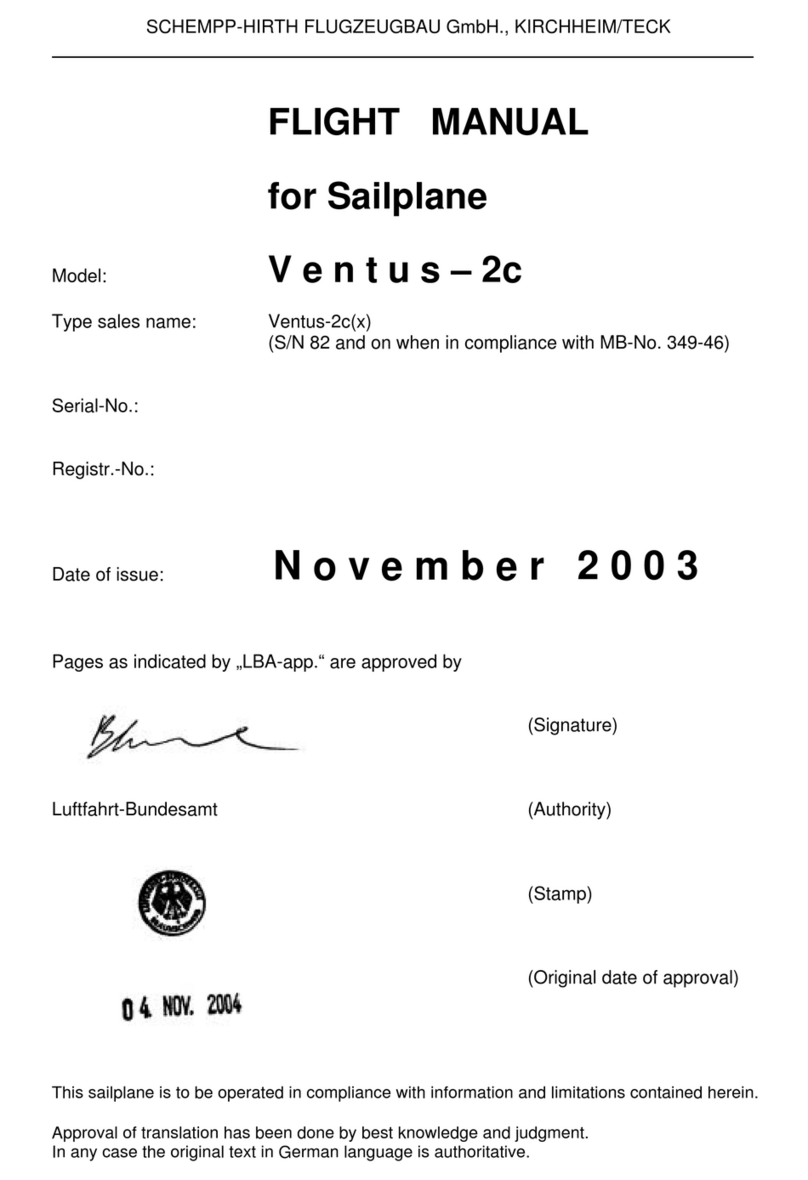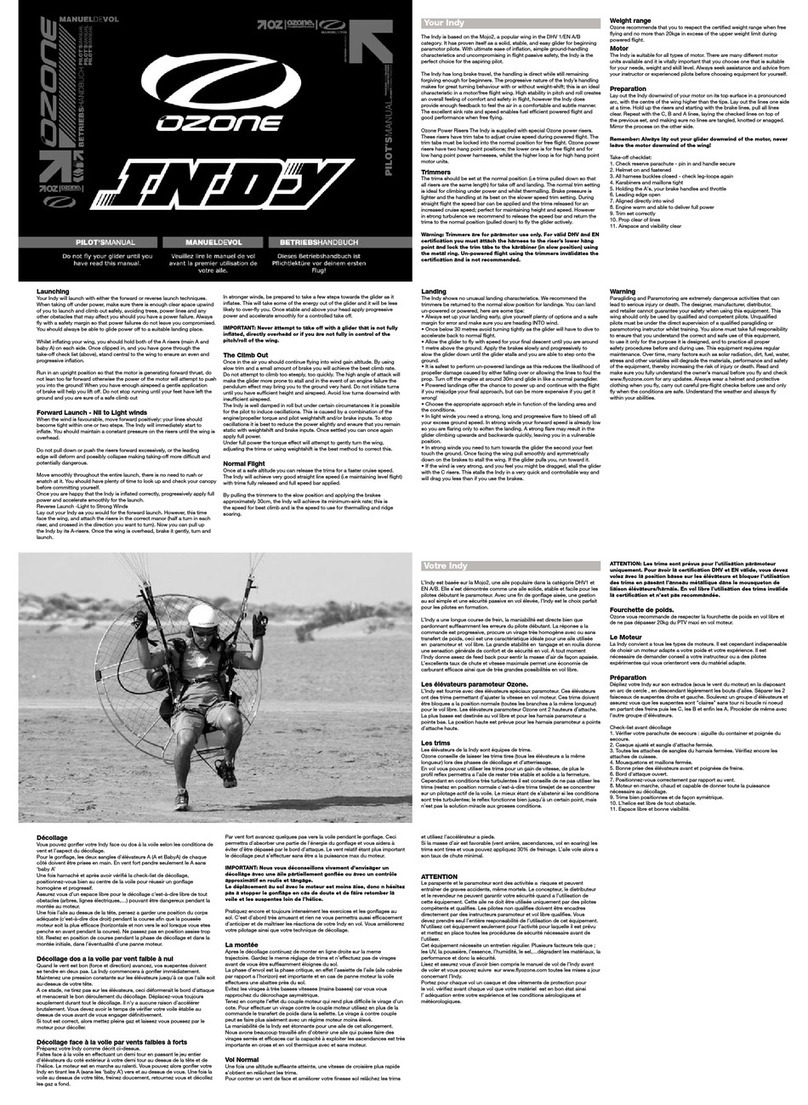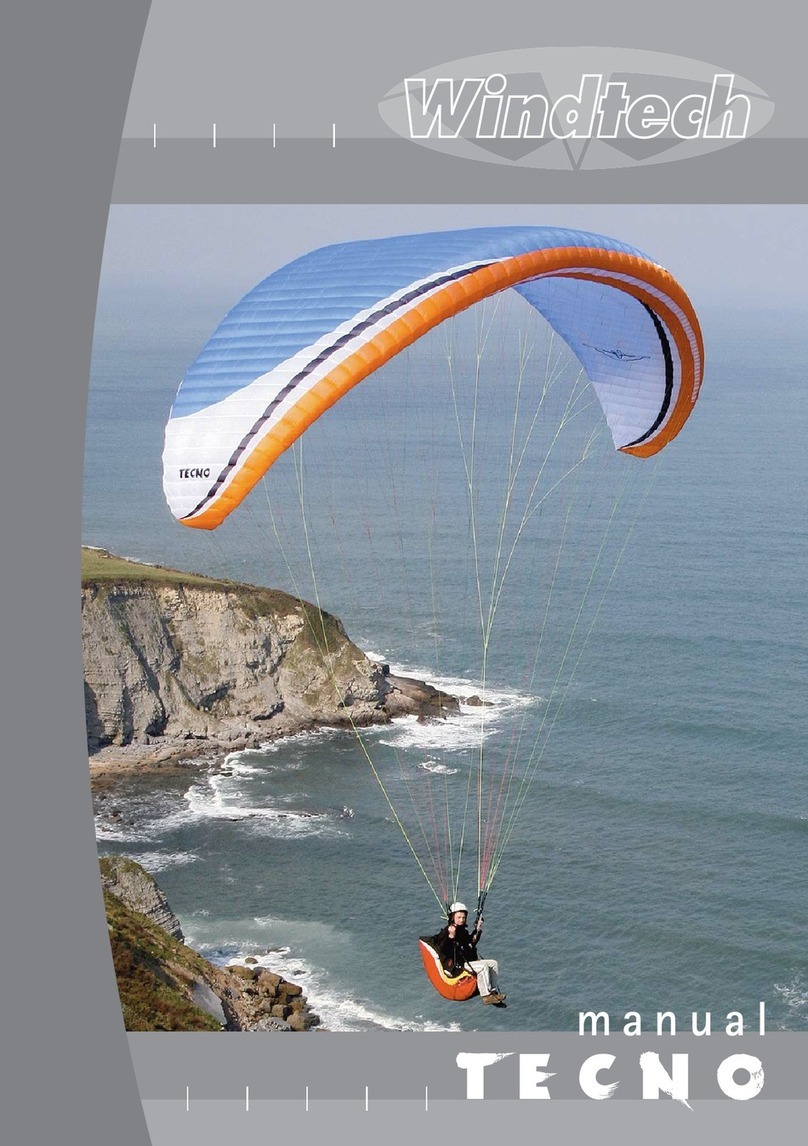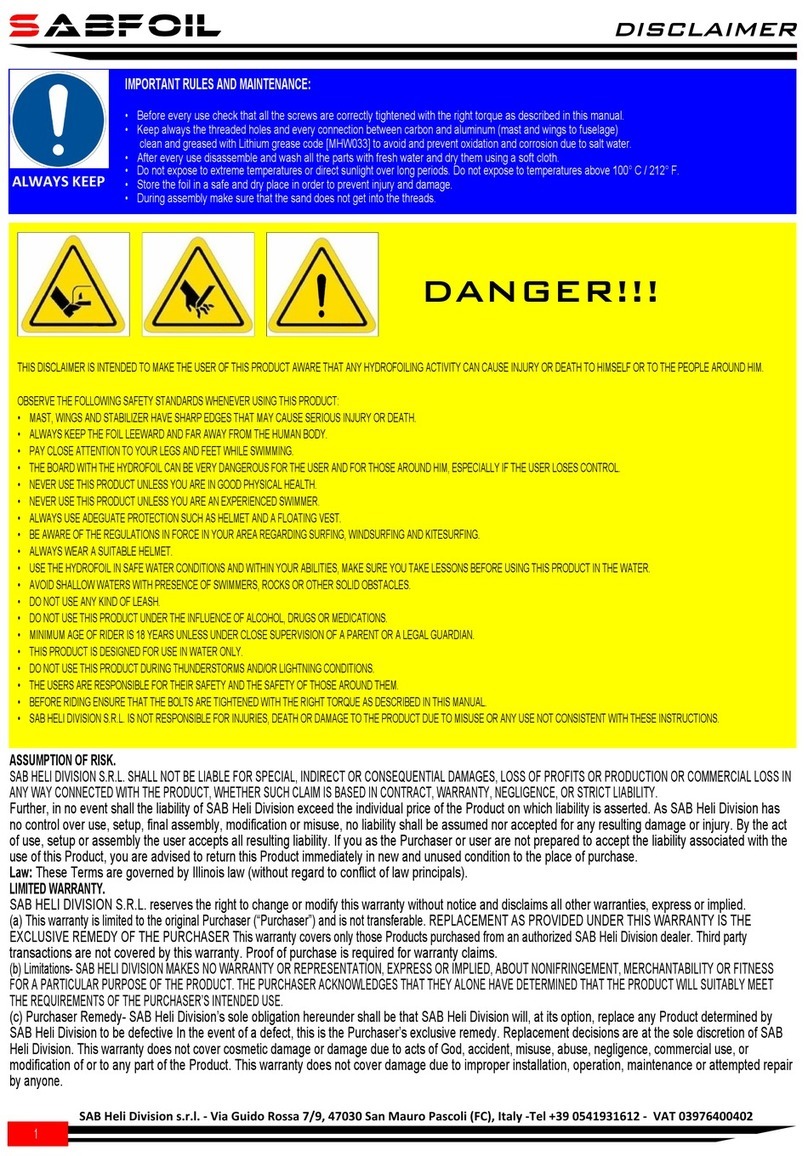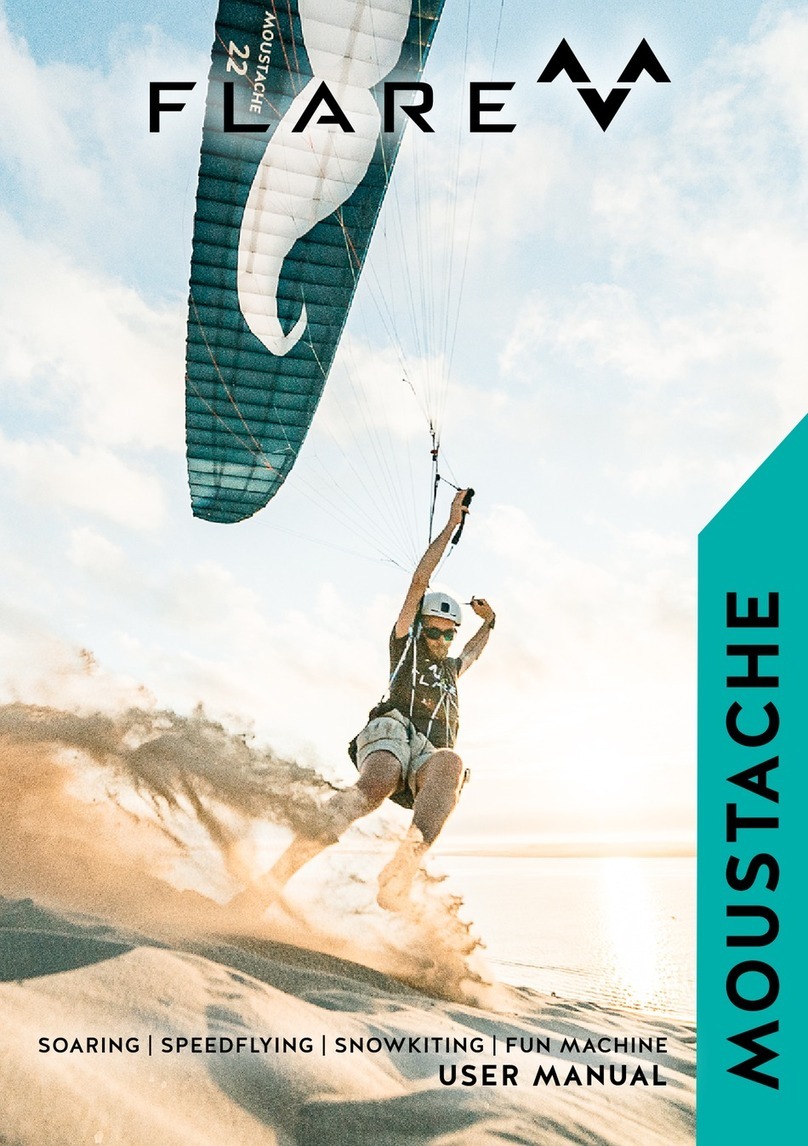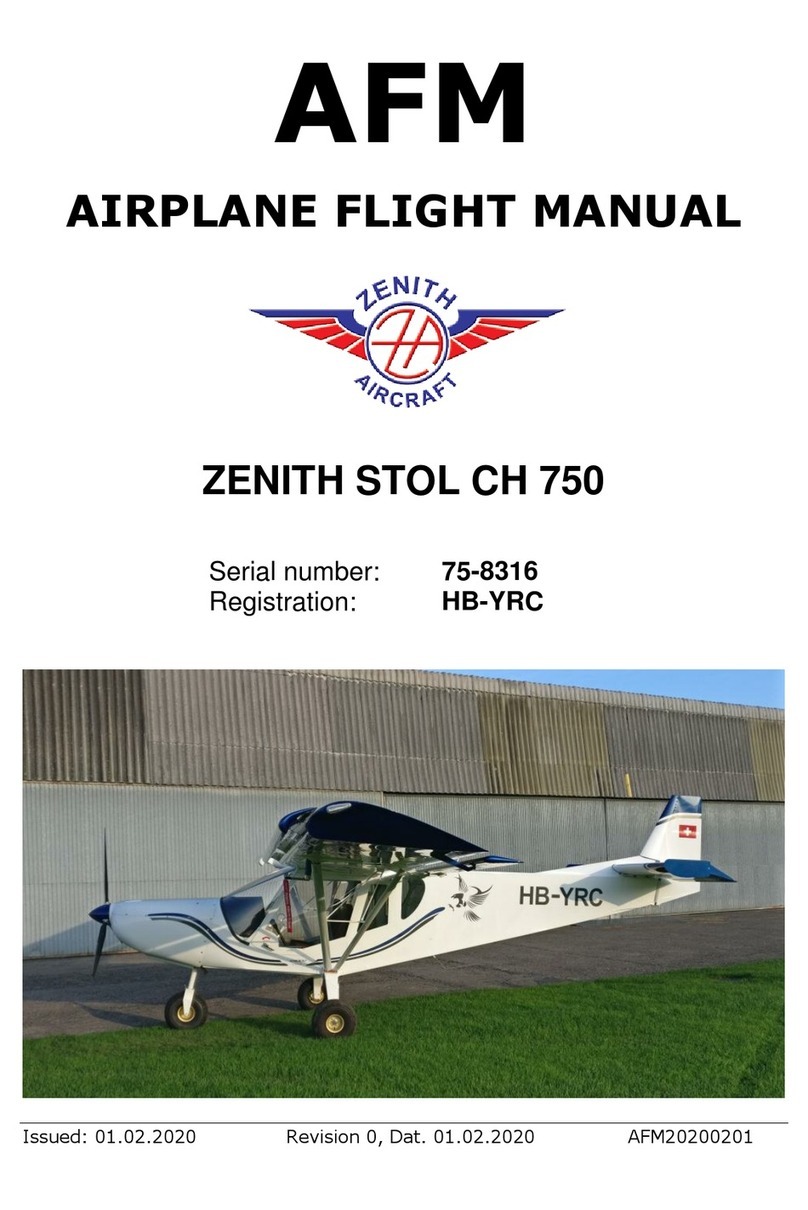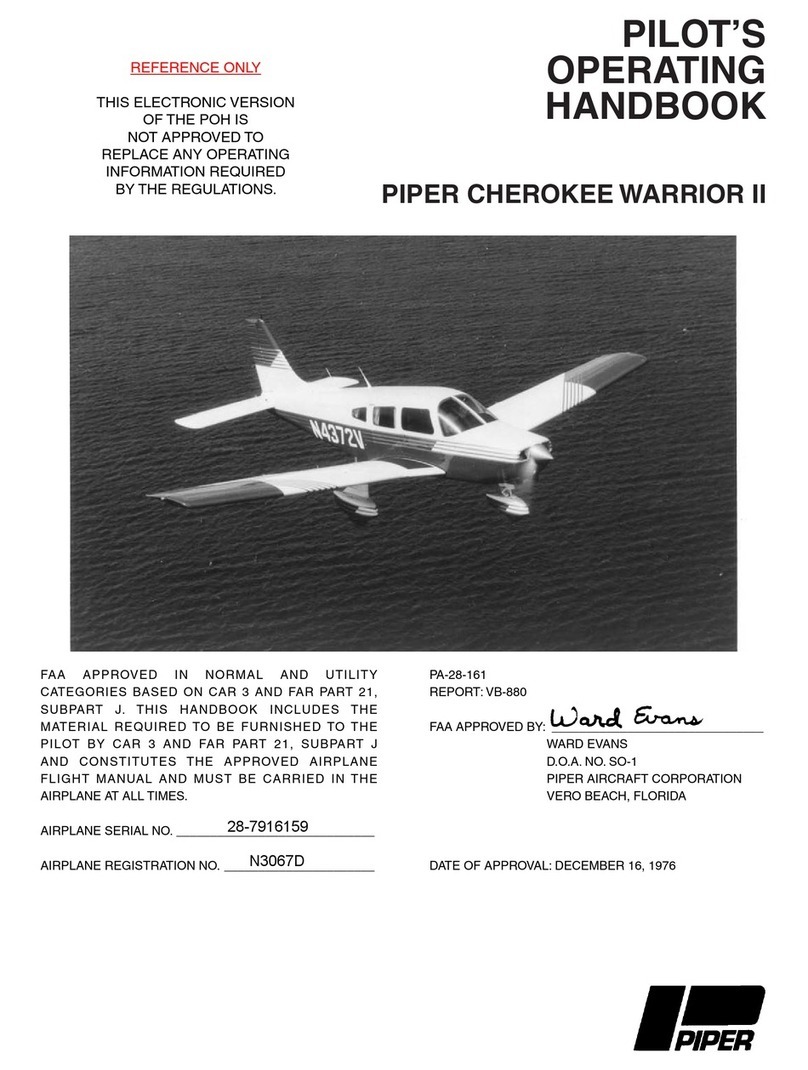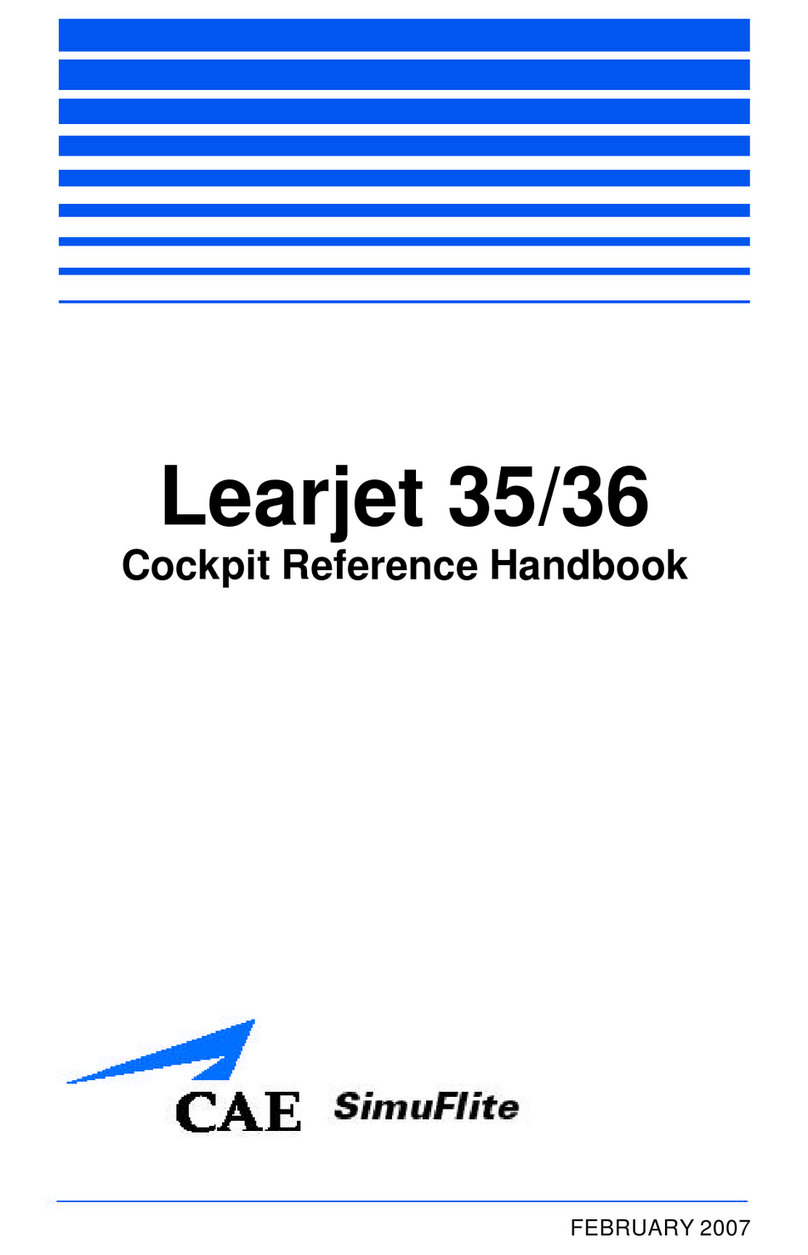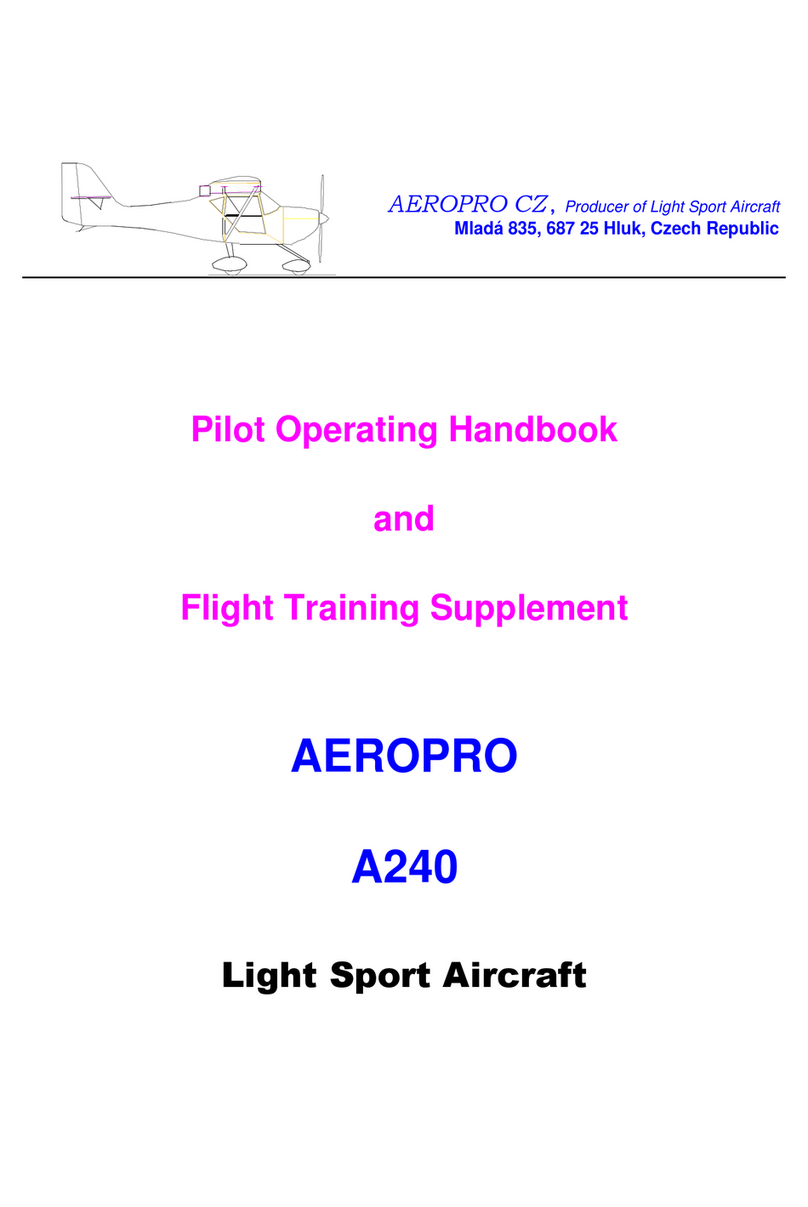Flugzeugbau LS1-f Technical specifications

Flight Manual LS1-f
Issued May 2011 0.1
Copyright DG Flugzeugbau GmbH - any copy or publishing prohibited
0Amendments, list of effective pages, table of contents
0.1
Amendments
Any revision of the present manual, except actual weighing data, must be
recorded in the following table and in case of approved sections endorsed
by the responsible airworthiness authority.
The new or amended text in the revised page will be indicated by a black
vertical line in the right hand margin, and the Revision No. and the date
will be shown on the bottom left hand of the page.
No. Page
Description Date Inserted
Signature
1
0.0-7.6 Combination of the initial flight
manuals of the Variants LS1-f
and LS1-f (45), new
standardized format
May 2011
2 1.1 -1.4, 2.1, 2.2,
2.6 – 2.9,
3.1 – 3.3,
4.1 – 4.14,
5.1, 5.2, 6.1 – 6.5,
7.1 – 7.5,
8.1 – 8.4, 9.1
Miscellaneous changes to the
contents of the latest
amendments of the initial flight
manuals
May 2011

Flight Manual LS1-f
Issued May 2011 0.2
Copyright DG Flugzeugbau GmbH - any copy or publishing prohibited
Page intentionally left blank

Flight Manual LS1-f
Issued May 2011 0.3
Copyright DG Flugzeugbau GmbH - any copy or publishing prohibited
0.2 List of effective pages
Section page issued replaced replaced replaced
0 0.1 May 11
0.2 ″
0.3 ″
0.4 ″
0.5 ″
0.6 ″
0.7 ″
1 1.1 May 11
1.2 ″
1.3 ″
1.4 ″
2 2.1 May 11
2.2 ″
2.3 ″
2.4 ″
2.5 ″
2.6 ″
2.7 ″
2.8 ″
2.9 ″
2.10 ″
3 3.1 May 11
3.2 ″
3.3 ″
4 4.1 May 11
4.2 ″
4.3 ″
4.4 ″
4.5 ″
4.6 ″
4.7 ″
4.8 ″
4.9 ″
4.10 ″
4.11 ″

Flight Manual LS1-f
Issued May 2011 0.4
Copyright DG Flugzeugbau GmbH - any copy or publishing prohibited
List of effective pages cont.
Section page issued replaced replaced replaced
4 4.12 May 11
4.13 ″
4.14 ″
5 5.1 May 11
5.2 ″
5.3 ″
6 6.1 May 11
6.2 ″
6.3 ″
6.4 ″
6.5 ″
7 7.1 May 11
7.2 ″
7.3 ″
7.4 ″
7.5 ″
8 8.1 May 11
8.2 ″
8.3 ″
8.4 ″
9 9.1 May 11

Flight Manual LS1-f
Issued May 2011 0.5
Copyright DG Flugzeugbau GmbH - any copy or publishing prohibited
0.3 Table of contents
SectionContent page
0
Amendments, list of effective pages, table of contents ........................... 0.1
0.1
Amendments ............................................................................................ 0.1
0.2
List of effective pages.............................................................................. 0.3
0.3
Table of contents...................................................................................... 0.5
1
General ..................................................................................................... 1.1
1.1
Introduction.............................................................................................. 1.1
1.2
Certification basis .................................................................................... 1.1
1.3
Warnings, cautions and notes .................................................................. 1.2
1.4
Descriptive data ....................................................................................... 1.3
1.5
Three view drawing ................................................................................. 1.4
2
Limitations ............................................................................................... 2.1
2.1
Introduction.............................................................................................. 2.1
2.2
Airspeed ................................................................................................... 2.2
2.3
Airspeed Indicator Markings ................................................................... 2.3
2.3.1
LS1-f .................................................................................................. 2.3
2.3.2
LS1-f (45)........................................................................................... 2.3
2.4
Mass (weight)........................................................................................... 2.4
2.5
Centre of gravity ...................................................................................... 2.4
2.6
Approved manoeuvres ............................................................................. 2.4
2.7
Flight crew ............................................................................................... 2.5
2.8
Kinds of operation.................................................................................... 2.5
2.9
Minimum equipment................................................................................ 2.5
2.9.1
Normal operation ............................................................................... 2.5
2.9.2
In addition for cloud flying ................................................................ 2.5
2.10
Aerotow, winch and autotow launching .................................................. 2.6
2.10.1
Weak links.......................................................................................... 2.6
2.10.2
Towing cable for aerotow .................................................................. 2.6
2.10.3
Max. towing speeds ........................................................................... 2.6
2.10.4
Min. towing speeds for aerotow......................................................... 2.6
2.10.5
Tow Release....................................................................................... 2.6
2.11
Tyre Pressure ........................................................................................... 2.6
2.12
Waterballast ............................................................................................. 2.7
2.13
Limitations placards................................................................................. 2.8
2.13.1
Limitations placards LS1-f ................................................................ 2.8
2.13.2
Limitations placards LS1-f (45)......................................................... 2.9
2.13.3
LS1-f and LS1-f (45) ....................................................................... 2.10
3
Emergency procedures............................................................................. 3.1
3.1
Introduction.............................................................................................. 3.1
3.2
Canopy jettison ........................................................................................ 3.1
3.3
Bailing out................................................................................................ 3.1

Flight Manual LS1-f
Issued May 2011 0.6
Copyright DG Flugzeugbau GmbH - any copy or publishing prohibited
SectionContent page
3.4
Stall characteristics and stall recovery..................................................... 3.1
3.5
Spinnng characteristics and Spin Recovery............................................. 3.2
3.6
Recovery from unintentional cloud flying............................................... 3.2
3.7
Emergency wheel up landing................................................................... 3.2
3.8
Emergency ground loop........................................................................... 3.2
3.9
Emergency landing on water ................................................................... 3.3
4
Normal procedures................................................................................... 4.1
4.1
Introduction.............................................................................................. 4.1
4.2
Rigging and derigging, filling and dumping the watertanks ................... 4.1
4.2.1
Rigging............................................................................................... 4.1
4.2.2
Handling and securing the L’Hotellier control quick connectors...... 4.2
4.2.3
Filling the water ballast tanks ............................................................ 4.3
4.2.4
Dumping the waterballast .................................................................. 4.3
4.2.5
Derigging ........................................................................................... 4.4
4.3
Daily Inspection ....................................................................................... 4.5
4.3.1
Inspection prior to rigging: ................................................................ 4.5
4.3.2
Inspection after rigging - Walk around the aircraft ........................... 4.6
4.3.3
Daily inspection after flight operaton ................................................ 4.8
4.3.4
Pre-flight inspection........................................................................... 4.8
4.4
Normal procedures and recommended speeds ........................................ 4.9
4.4.1
Aerotow.............................................................................................. 4.9
4.4.2
Winch launch ..................................................................................... 4.9
4.4.3
Free flight......................................................................................... 4.10
4.4.4
Approach and landing ...................................................................... 4.11
4.4.5
Flight with water ballast................................................................... 4.12
4.4.6
Flight at high altitude and at low temperatures ............................... 4.13
4.4.7
Flights in rain and thunderstorms .................................................... 4.14
4.4.8
Cloud flying ..................................................................................... 4.14
4.4.9
Aerobatics ........................................................................................ 4.14
5
Performance ............................................................................................. 5.1
5.1
Airspeed indicator system calibration...................................................... 5.1
5.2
Stall speeds............................................................................................... 5.2
5.3
Demonstrated crosswing performance .................................................... 5.2
5.4
Gliding performance ................................................................................ 5.2
5.5
Flight polar............................................................................................... 5.3
6
Mass (weight) and balance ...................................................................... 6.1
6.1
Introduction.............................................................................................. 6.1
6.2
Weighing procedures ............................................................................... 6.1
6.3
Weighing record....................................................................................... 6.1
6.4
Basic empty mass and C.G. ..................................................................... 6.1
6.5
Mass of all non-lifting parts (WNLP)...................................................... 6.1
6.6
Max. mass (weight).................................................................................. 6.1

Flight Manual LS1-f
Issued May 2011 0.7
Copyright DG Flugzeugbau GmbH - any copy or publishing prohibited
SectionContent page
6.7
Useful loads (payload) ............................................................................. 6.2
6.8
Loading chart ........................................................................................... 6.2
6.8.1
Cockpit load ....................................................................................... 6.2
6.8.2
Baggage.............................................................................................. 6.2
6.8.3
Waterballast in the wing tanks........................................................... 6.2
6.8.4
Weighing report (for section 6.3)....................................................... 6.3
6.8.5
Ballast chart (total ballast) ................................................................. 6.4
7
Sailplane and systems description ........................................................... 7.1
7.1
Introduction.............................................................................................. 7.1
7.2
Airframe ................................................................................................... 7.1
7.3
Placards .................................................................................................... 7.1
7.4
Aileron control ......................................................................................... 7.2
7.5
Elevator control, trim ............................................................................... 7.2
7.6
Rudder Control......................................................................................... 7.2
7.7
Wheel brake ............................................................................................. 7.3
7.8
Airbrakes.................................................................................................. 7.3
7.9
Waterballast System................................................................................. 7.3
7.10
Cockpit ..................................................................................................... 7.3
7.11
Canopy ..................................................................................................... 7.3
7.12
Tow hooks................................................................................................ 7.3
7.13
Rudder pedal adjustment.......................................................................... 7.4
7.14
Seat, back rest and safety harness............................................................ 7.4
7.15
Instrument panel....................................................................................... 7.4
7.16
Baggage compartment ............................................................................. 7.4
7.17
Oxygen system......................................................................................... 7.4
7.18
Landing gear ............................................................................................ 7.4
7.19
Pitot-/Static pressure system.................................................................... 7.5
7.20
Canopy emergency release ...................................................................... 7.5
8
Sailplane handling, care and maintenance............................................... 8.1
8.1
Introduction.............................................................................................. 8.1
8.2
Inspection period, maintenance ............................................................... 8.1
8.3
Alterations or repairs................................................................................ 8.1
8.4
Tie Down, Parking ................................................................................... 8.2
8.5
Transport .................................................................................................. 8.2
8.6
Towing on the ground.............................................................................. 8.3
8.7
Cleaning and Care.................................................................................... 8.3
8.7.1
Hints for care...................................................................................... 8.3
8.7.2
Plexiglas canopy ................................................................................ 8.4
8.7.3
Metal parts.......................................................................................... 8.4
9
Supplements............................................................................................. 9.1

Flight Manual LS1-f
Issued May 2011 1.1
Copyright DG Flugzeugbau GmbH - any copy or publishing prohibited
1
General
1.1 Introduction
The sailplane flight manual has been prepared to provide pilots and
instructors with information for the safe and efficient operation of the LS1-f
and LS1-f (45).
This manual includes the material required to be furnished to the pilot by
the airworthiness requirements. It also contains supplemental data supplied
by the glider manufacturer.
1.2 Certification basis
This type of sailplane has been approved by the Luftfahrt-Bundesamt
(LBA) in accordance with:
Airworthiness requirements:
“Airworthiness requirements forSailplanes “ LFS, issued 1966
and
Standards for Structural Substantiation of Glass Fibre Reinforced Plastic
Components for Sailplanes, issued March 1965
Type certified by EASA Type Certificate EASA A.095 Type LS-sailplanes.
Date of certification: 30.08.2010
Initial type certification by LBA (Luftfahrt Bundesamt) with Type
Certificate No. 262.
Date of certification:
Variant LS1-f: 30.08.1974
Variant LS1-f (45): 21.05.1976
Category of Airworthiness: "Utility"

Flight Manual LS1-f
Issued May 2011 1.2
Copyright DG Flugzeugbau GmbH - any copy or publishing prohibited
1.3 Warnings, cautions and notes
This manual was produced according to the flight manual specimen from
the actual valid certification specifications CS22.
It contains much more information than the initial manual.
The following definitions apply to warnings, cautions and notes used in the
flight manual:
"Warning" means that the non observation of the
corresponding procedure leads to an
immediate or important degradation of the
flight safety.
"Caution" means that the non observation of the
corresponding procedure leads to a minor or
to a more or less long term degradation of
the flight safety.
"Note" draws the attention on any special item not
directly related to safety but which is
important or unusual.

Flight Manual LS1-f
Issued May 2011 1.3
Copyright DG Flugzeugbau GmbH - any copy or publishing prohibited
1.4 Descriptive data
The LS1-f and LS1-f (45) are single-seater high performance sailplanes with
conventional T-type horizontal tailplane.
Technical details
•Comfortable seating, backrest adjustable at ground.
•Large canopy for good in-flight vision.
•Sealed airbrake- and landing gear boxes.
•Retractable main wheel, spring mounted. Wheel with drum brake actuated
via the airbrake handle.
•Waterballast in the wings in waterbags
Technical data units LS1-f LS1-f (45)
Wing span m 15
Wing surface m
2
9,75
Aspect ratio / 23,1
Length m 6,75
Fuselage hight m 0,83
Fuselage width m 0,62
Horizontal tail span m 2,2
Horizontal tail surface m² 0,98
Waterballast kg (ltr.) max. 2* 45 max. 2*90
Empty mass with min. equipment kg approx. 230 aprox. 235
Wing loading (with 80kg payload) kg/m² approx. 32 approx. 32
max. mass kg 390 439
max. wing loading kg/m² 40 45
Max. speed VNE km/h 250 270
Aerobatics / Not approved

Flight Manual LS1-f
Issued May 2011 1.4
Copyright DG Flugzeugbau GmbH - any copy or publishing prohibited
1.5 Three view drawing

Flight Manual LS1-f
Issued May 2011 2.1
Copyright DG Flugzeugbau GmbH - any copy or publishing prohibited
2Limitations
2.1 Introduction
Section 2 includes operating limitations, instrument markings and basic
placards necessary for safe operation of the gliders LS1-f and LS1-f (45),
its standard systems and standard equipment.
The limitations included in this section have been approved.

Flight Manual LS1-f
Issued May 2011 2.2
Copyright DG Flugzeugbau GmbH - any copy or publishing prohibited
2.2 Airspeed
Airspeed limitations and their operational significance are shown below
Speed IAS
km/h
(kts.)
Remarks
V
NE
Never exceed
speed
LS1-f:
250 (135)
LS1-f (45):
270 (146)
Do not exceed this speed in any
operation and do not use more than
1/3 of control deflection.
V
RA
Rough air speed LS1-f:
250 (135)
LS1-f (45):
270 (146)
Do not exceed this speed except in
smooth air and then only with
caution. Rough air is in lee-wave
rotors, thunderclouds, visible
whirlwinds or over mountain crests
etc.
Do not use more than 1/3 of control
deflection.
V
A
Manoeuvring
speed
170 (92) Do not make full or abrupt control
movement above this speed, because
under certain conditions the sailplane
may be overstressed by full control
movement.
V
W
Maximum winch-
launching speed
130 (70) Do not exceed this speed during
winch- or auto-tow-launching
V
T
Maximum aero-
towing speed
170 (92) Do not exceed this speed during
aerotowing.
V
LO
Maximum landing
gear operating
speed
LS1-f:
250 (135)
LS1-f (45):
270 (146)
Do not extend or retract the landing
gear above this speed.
Warning: At higher altitudes the true airspeed is higher than the indicated
airspeed, so V
NE
is reduced with altitude according to the table below, see also
section 4.4.6.
Note: The strength of the airframe is proved for + 10 m/s gusts at max. speed
VNE. This means that combination of such a gust at VNE and positive
manoeuvring load at the same time may overstress the airframe

Flight Manual LS1-f
Issued May 2011 2.3
Copyright DG Flugzeugbau GmbH - any copy or publishing prohibited
2.3 Airspeed Indicator Markings
Airspeed indicator markings and their colour code significance are shown
below.
2.3.1 LS1-f
Marking (IAS) value or
range km/h (kts.) Significance
Green
Arc
80 – 170
(43 - 92)
Normal Operating Range
(Lower limit is maximum weight
1.1*VS1 at most forward c.g. with flaps
neutral. Upper limit is rough air speed.)
Yellow
Arc
170 -250
(92 – 135)
Manoeuvres must be con ducted with
caution and only in smooth air
Red Line 250 (135) Maximum speed for all operations
2.3.2 LS1-f (45)
Marking (IAS) value or
range km/h (kts.) Significance
Green
Arc
80 – 170
(43 - 92)
Normal Operating Range
(Lower limit is 1.1*VS1 at maximum
weight and most forward c.g.. Upper
limit is rough air speed.)
Yellow
Arc
170 -270
(92 – 146)
Manoeuvres must be con ducted with
caution and only in smooth air
Red Line 270 (146) Maximum speed for all operations

Flight Manual LS1-f
Issued May 2011 2.4
Copyright DG Flugzeugbau GmbH - any copy or publishing prohibited
2.4 Mass (weight)
Maximum take off and landing weight with waterballast
LS1-f: 390 kg (860 lbs.)
LS1-f (45): 439 kg (968 lbs.)
Caution: It is recommended to dump the waterballast before landing on
airfields. Dump the ballast before an outlanding in any case.
Maximum take-off and landing mass without waterballast:
W= W
NLP
+ W
wings
W
NLP
= Maximum mass of the non lifting parts (see below)
W
wings
= actual mass of the wings
Maximum weight of the non lifting parts = 230 kg 507 lbs.
Maximum mass in baggage compartment: 12 kg 26.5 lbs.
Caution: Heavy pieces of baggage must be secured to the baggage compartment
floor.
Maximum waterballast
Variant mass kg (litres) mass US.gal. mass lbs.
LS1-f 2 x 45 2 x 11.9 2 x 99
LS1-f (45) 2 x 90 2 x 23.8 2 x 198
The max. take off mass is not to be exceeded.
Warning: Follow the loading procedures see section 6.
2.5 Centre of gravity
Centre of gravity range in flight is:
220mm (8.66 in.) up to 420mm (16.53 in.) behind datum.
Datum= wing leading edge at the rootrib.
Reference line= underside of aft fuselage boom horizontal.
C.G. diagrams and loading chart see sect. 6.
2.6 Approved manoeuvres
This sailplane is certified for normal gliding in the "Utility" category.
Aerobatics are not approved.

Flight Manual LS1-f
Issued May 2011 2.5
Copyright DG Flugzeugbau GmbH - any copy or publishing prohibited
2.7 Flight crew
Max. load in the seat: 110 kg (242 lbs.) unless limited by the max.
permissible mass of the nonlifting parts (230 kg, 507 lbs).
Min. load in the seat (pilot + parachute):60 kg (132 lbs.).
If necessary the min. cockpit load may be increased according to
maintenance manual section 2.2.1 and value entered in section 6.8.4.
With these loads, the C.G. range given under section 2.5 will be kept within
the limits when the empty weight C.G. is within its limits. See loading chart
in section 6.
Caution: With lower pilot weights lead ballast must be added to the seat.
Ballast put on the seat (lead ballast cushion) must be fastened at the safety belt
anchor points.
2.8 Kinds of operation
Flights according to VFR (daylight)
Aerotow
Winch- and auto-tow launching
Aerobatics are not permitted
Cloud flying (daylight): permitted when properly instrumented (see below).
2.9 Minimum equipment
As minimum equipment only the instruments and equipment specified in
the equipment list (see Maintenance Manual section 6) are admissible.
2.9.1 Normal operation
a) Airspeed indicator: Range: 0-300 km/h (0-135kts.);
Speed range markings see sect. 2.3
b) Altimeter: Range: 0 – min. 10.000 m (0 – min. 30000 ft),
Altimeter with fine range pointer, 1 turn max. 1000 m (3000 ft.)
c) Four piece symmetrical safety harness
d) Parachute automatic or manual type or a suitable firm back
cushion compressed approx. 8 cm (3 in.) thick
e) Required placards, check lists, Flight manual.
2.9.2 In addition for cloud flying
(Not permitted in the USA, Canada and Australia)
Magnetic compass (compensated in the airdraft)
VHF - transceiver (ready for operation)
Variometer
Turn and bank indicator or artificial horizon
Note: Experience has shown that the installed airspeed indicator system may be
used for cloud flying.
Caution: The weight of the upper part of the instrument panel shall not exceed
4 kg (8.8 lbs.).

Flight Manual LS1-f
Issued May 2011 2.6
Copyright DG Flugzeugbau GmbH - any copy or publishing prohibited
2.10 Aerotow, winch and autotow launching
2.10.1 Weak links
Winch launch aero tow
max. 5500 N (1240 lbs.) 5500 N (1240 lbs.)
recommended 5000 N + 500 N
(1120 + 112 lbs.)
5000 N + 500 N (1120 + 112 lbs.)
behind aircraft
3000 N + 300 N (670+ 67 lbs.) behind
ultralight aircraft or powerded sailplanes
2.10.2 Towing cable for aerotow
Length: 30-70 m (100 - 230 ft)
Material: hemp- or plastic fibres
2.10.3 Max. towing speeds
maximum maximum
Aerotow V
T
= 170 km/h 92 kts.
Winch- and autotow V
W
= 130 km/h 70 kts.
2.10.4 Min. towing speeds for aerotow
LS1-f and LS1-f (45) No waterballast 100 km/h 54 kts.
LS1-f With waterballast 110 km/h 59 kts.
LS1-f (45) With waterballast 120 km/h 65 kts.
2.10.5 Tow Release
The C.G. tow release (installed in front of the main wheel at the LG fork) is
suitable for winch and auto-tow launching as well as for aerotow.
Warning: When towing at the C.G. hook don’t retract the landing gear.
Caution: If an additional front hook is installed according to TN59 this hook is
to be used for aerotow.
In case to pitot pressure port is installed in the fuselage nose the ASI indication
may be lower than real during aerotow depending on cable ring position.
2.11 Tyre Pressure
Main wheel 3,0 bar (43.5 psi)

Flight Manual LS1-f
Issued May 2011 2.7
Copyright DG Flugzeugbau GmbH - any copy or publishing prohibited
2.12 Waterballast
Filling the water ballast is only allowed with a filling system which enables
determination of the exact amount of ballast filled, e.g. water gauge or
calibrated canisters. Only symmetrical loading is allowed.
After filling, balance the wings by dumping enough water from the heavy
wing,.
Warning: Follow the loading chart, see section 6.8.
Don’t try to fill more water into the tanks than the specified values.
The max. take off weight must not be exceeded.

Flight Manual LS1-f
Issued May 2011 2.8
Copyright DG Flugzeugbau GmbH - any copy or publishing prohibited
2.13 Limitations placards
2.13.1 Limitations placards LS1-f
Cockpit Checklist
This sailplane must be operated in compliance with
operating limitations as stated in the form of markings,
placards and flight manual.
1. Trim ballast (for under weight pilot)?
2. Loading plan regarded?
3. Parachute worn properly, static line connected?
4. Seat back and rudder pedals in comfortable position ?
5. Safety harness buckled ?
6. All controls and instruments in reach?
7. Air brakes cycled and locked?
8. Trim position ?
9. Altimeter adjusted?
10. Positive control check ? (One person at the control
surfaces).
11. Tail dolly removed ?
12. Tow release checked?
13. Canopy locked?
Clearly visible at right cockpit wall
Type: LS1-f
Serial No.: ____________ Registration: __________
Airspeed limits:
Winch launch and auto tow 130 km/h 81 mph 70 kts.
Aero tow 170 km/h 106 mph 92 kts.
Manoeuvring 170 km/h 106 mph 92 kts.
Rough air 250 km/h 155 mph 135 kts.
Never exceed 250 km/h 155 mph 135 kts.
Aerobatic manoeuvres are prohibited
Max. take-off mass 390 kg 860 lbs.
Pilot weight incl. max: 110 kg 242 lbs.
Parachute min: 60 kg 132 lbs.
With lower pilot weight necessary ballast must be added.
Clearly visible at right cockpit wall
Altitude in [m] 0-2000 3000 4000 5000 6000 7000 8000 9000 10000
VNE IAS km/h 250 237 225 214 202 191 180 170 160
Altitude in [ft] 0-6560 9843 13124 16405 19685 22966 26247 29528 32809
VNE IAS kts. 135 128 122 115 109 103 97 92 86

Flight Manual LS1-f
Issued May 2011 2.9
Copyright DG Flugzeugbau GmbH - any copy or publishing prohibited
2.13.2 Limitations placards LS1-f (45)
Cockpit Checklist
This sailplane must be operated in compliance with
operating limitations as stated in the form of markings,
placards and flight manual.
1. Trim ballast (for under weight pilot)?
2. Loading plan regarded?
3. Parachute worn properly, static line connected?
4. Seat back and rudder pedals in comfortable position ?
5. Safety harness buckled ?
6. All controls and instruments in reach?
7. Airbrakes cycled and locked?
8. Trim position ?
9. Altimeter adjusted?
10. Positive control check ? (One person at the control
surfaces).
11. Tail dolly removed ?
12. Tow release checked?
13. Canopy locked?
Clearly visible at right cockpit wall
Type: LS1-f (45)
Serial No.: ____________ Registration: __________
Airspeed limits:
Winch launch and auto tow 130 km/h 81 mph 70 kts.
Aero tow 170 km/h 106 mph 92 kts.
Manoeuvring 170 km/h 106 mph 92 kts.
Rough air 270 km/h 167 mph 146 kts.
Never exceed 270 km/h 167 mph 146 kts.
Aerobatic manoeuvres are prohibited
Max. take-off mass 439 kg 968 lbs.
Pilot weight incl. max: 110 kg 242 lbs.
Parachute min: 60 kg 132 lbs.
With lower pilot weight necessary ballast must be added.
Clearly visible at right cockpit wall
Altitude in [m] 0-2000 3000 4000 5000 6000 7000 8000 9000 10000
VNE IAS km/h 270 256 243 231 218 206 195 184 173
Altitude in [ft] 0-6560 9843 13124 16405 19685 22966 26247 29528 32809
VNE IAS kts. 146 138 131 125 118 111 105 99 93
Clearly visible at right cockpit wall
This manual suits for next models
1
Table of contents
Other Flugzeugbau Aircraft manuals
